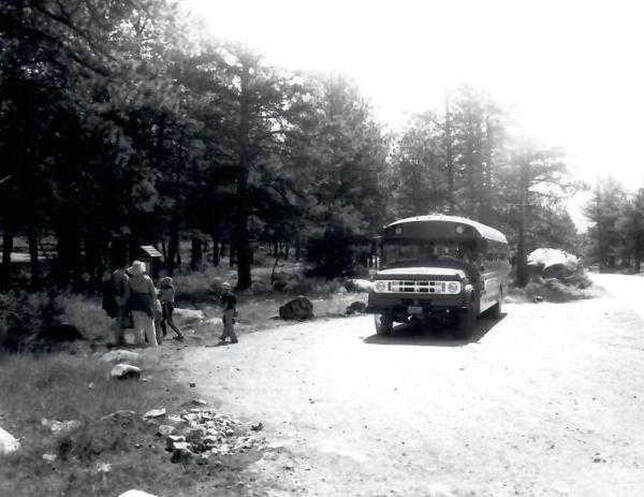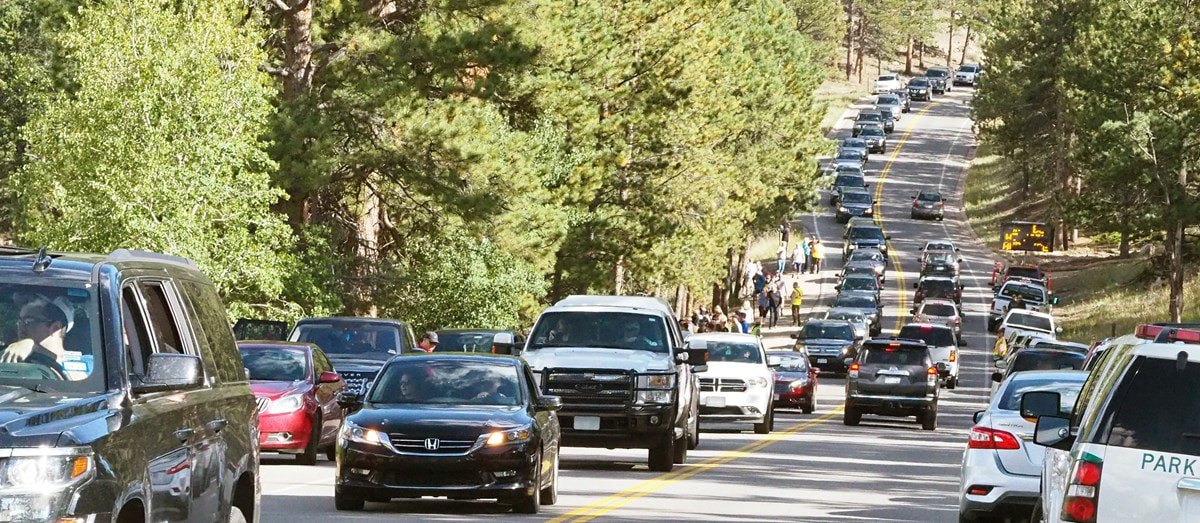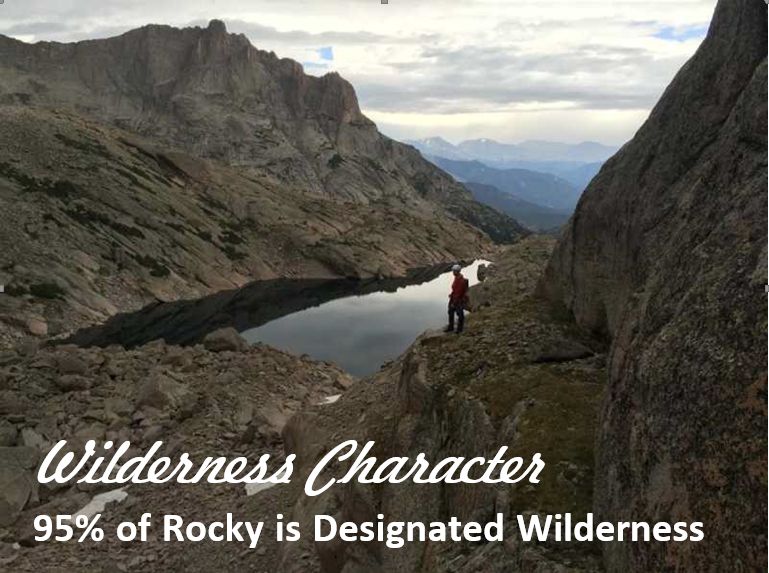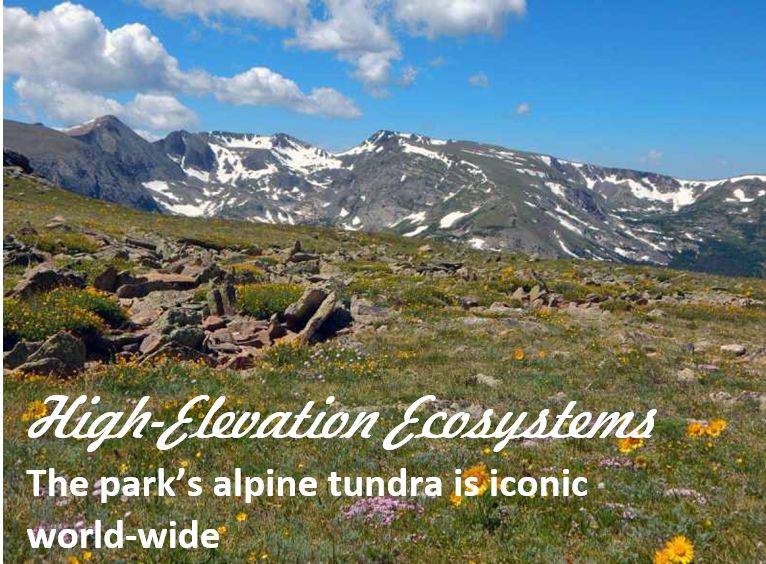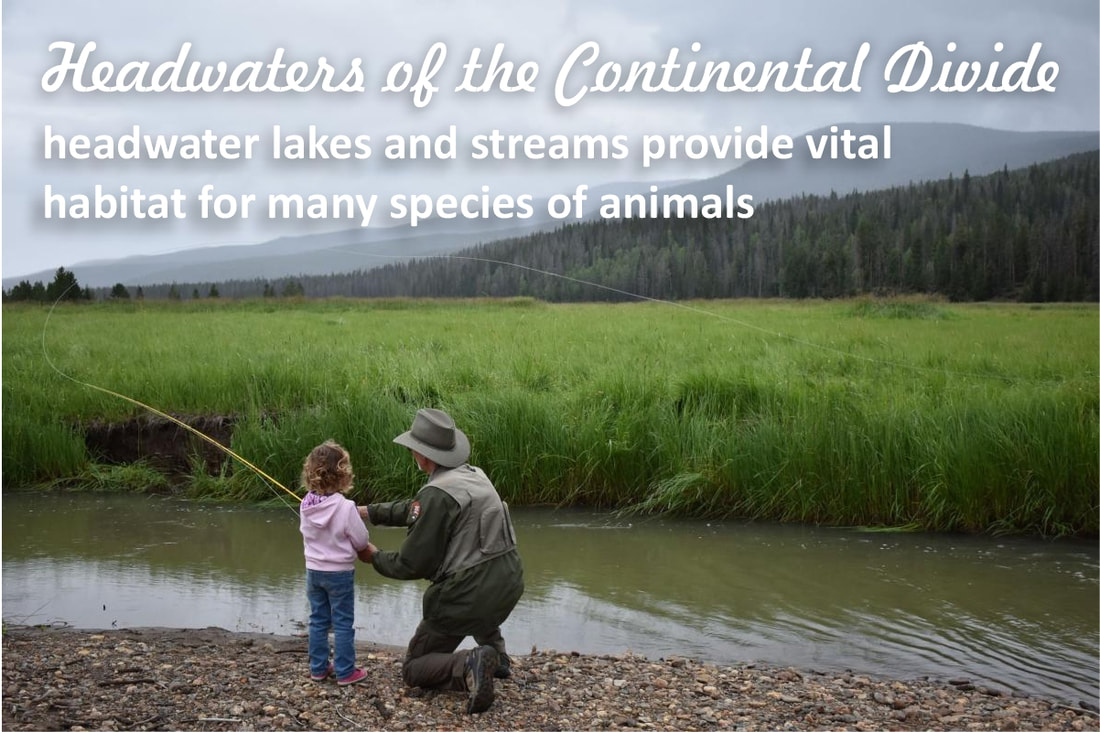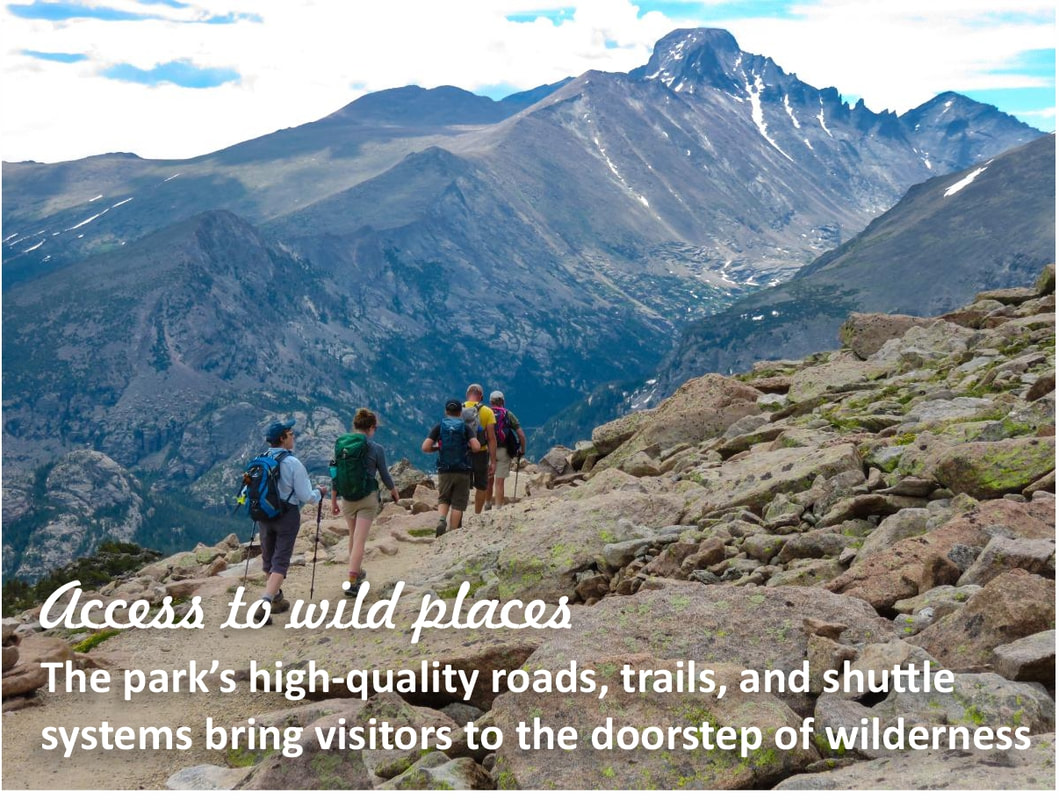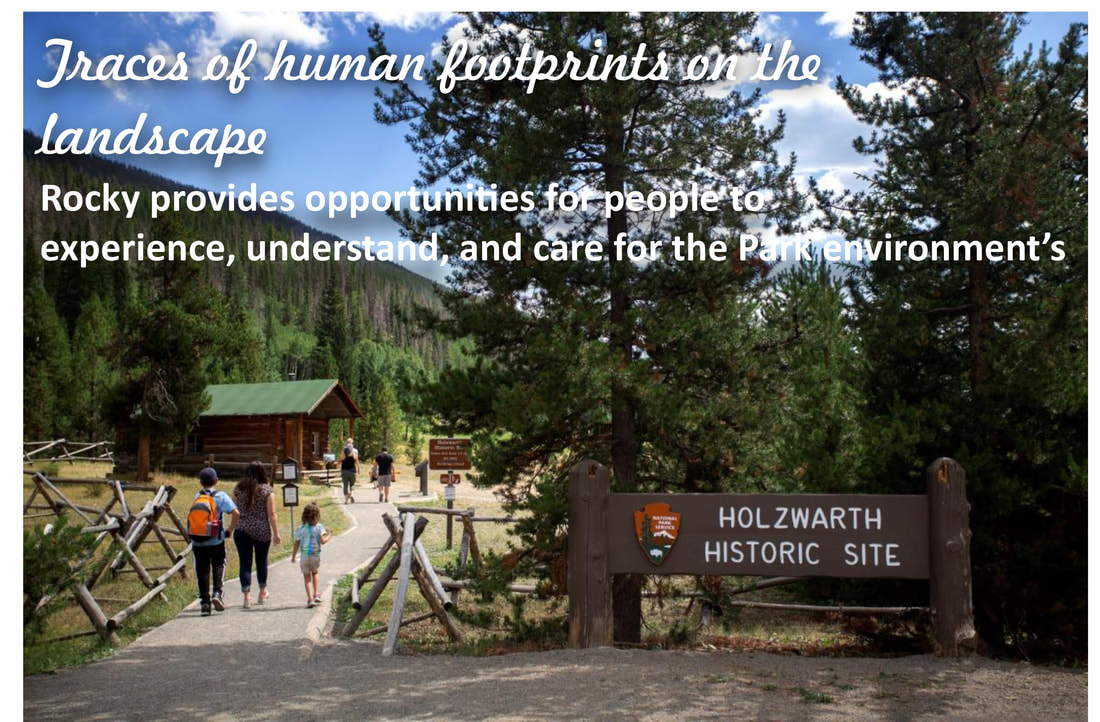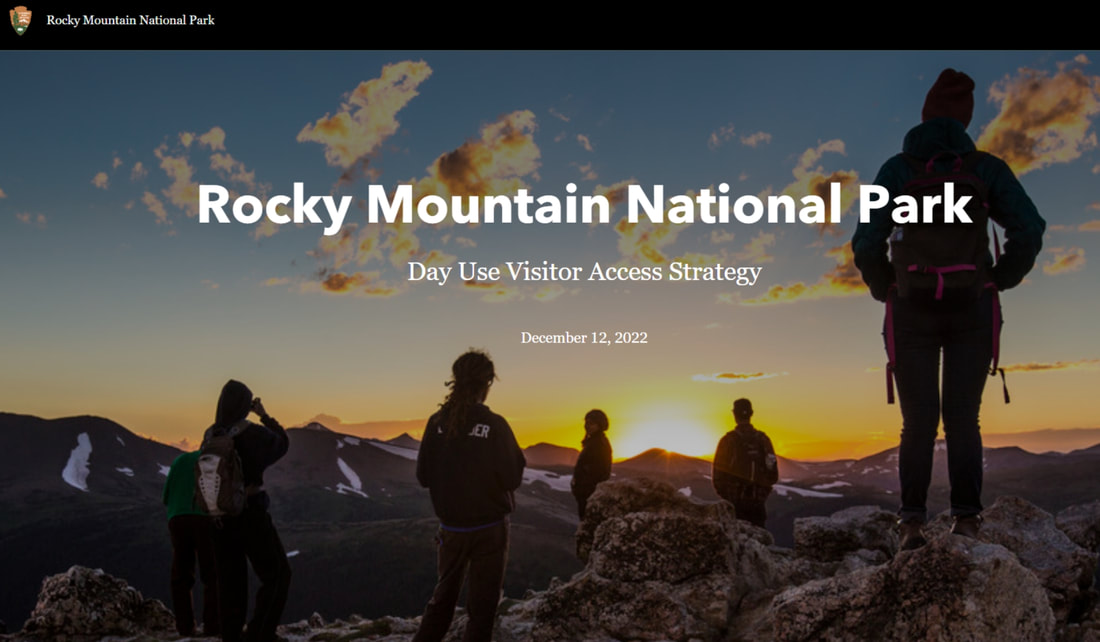|
by Barb Boyer Buck, HIKE ROCKY's managing editor All photos courtesy of NPS/ROMO Yep, it's coming back. Another pilot timed-entry reservation system (with slight tweaks over the 2022 system) will start on May 26 and extend through October 22, 2023. Day use visitor management in Rocky Mountain National Park is not going away; it actually started in the late 1970s, when a shuttle system was first implemented in the Bear Lake Corridor and has continued ever since with increasing restrictions on congested areas of the Park during peak visitation times. “From 2016-2019 it was really a very reactive stance: when those areas became highly congested and there were significant impacts, we started closing those areas and turning visitors around,” said Kyle Patterson, RMNP’s Public Information Officer, in a public meeting on December 15, 2022. “As we moved through the years, we saw that we needed to do that on more days. So, in 2019 in July and every weekend June-September we were turning people around daily.” Rocky is now taking a proactive approach to visitor management and is in the public input stage of developing a long-term solution. The Park needs help: your input on proposed ideas and suggestions on how to improve them will be taken until February 1, 2023. Timed-entry reservations have been required during the Park's peak season (Memorial Day weekend through mid- to late-October) since 2020. Some of the social media scuttlebutt attributed the first year's implementation to COVID or a way for the Park to make more money, but neither is true. The first three years of the timed-entry programs (TEPS) have been stopgaps to handle the explosion of visitors, especially in 2019 when the Park's visitation reached a record 4.6 million, a 44% increase since 2012. But more needs to be done. “Even after implementing the timed-entry system, in 2021 we saw our second- highest visitation with 4.4 million people,” said RMNP Superintendent Darla Sidles at the Dec. 15 virtual meeting. People love Rocky Mountain National Park and they are not going to stop coming. So, the Park needs to find ways to fulfil their mission under the Organic Act, which defines the mission of National Parks; and, the Wilderness Act, under which 95% of Rocky was designated wilderness in 2009. These two laws limit the Park's ability to build new infrastructure such as adding new parking lots or widening roads, but they also dictate that visitors be allowed to recreate on this public land. “It's a balancing act that we all focus on every day at Rocky Mountain National Park with our efforts to conserve park resources but also to provide for the amusement and enjoyment of not only all of us right now, but to provide for future generations,” said Patterson. The first public outreach in the process of developing a long-term visitor use program occurred from Spring 2021-Winter, 2021 (Phase One), during which the plan's purpose and need for the project began and civic engagement was initiated. NPS is now in Phase Two of the process where potential strategies are being explored and public input on several preliminary strategies is requested. Phase Three of the project begins in the Spring of 2023 and will continue through winter of that year; a "permanent" solution is scheduled to go into effect in 2024. John Hannon, Rocky's Management Specialist - Business Programs, presented four strategies along with additional complimentary strategies that could be combined to derive a permanent solution. Idea One looks very similar to what we've been experiencing for the past couple of years. It includes two separate timed-entry reservation programs for private vehicles, made available from an online vendor (the $2 reservation fee does not go to the Park, it's the vendor fee for providing the service). These reservations could be ticketed or distributed through a lottery, or a combination of both. Each reservation would have a two-hour window for arrival, with no limitation on length of stay. Some of the reservations would be held back and released for sale the night before. Unlike the pilot TEPS, Idea One may include a commercial-use strategy. Those impacted by this would include chartered buses and tours. The benefits of this idea include the ability of visitors of plan their trips to Rocky, an increase in the quality of the visitor experience, and the opportunity to visit the entire Park under one reservation. The trade-offs include an additional charge (the $2 reservation fee) and the need for internet service. The number of reservations would likely decrease, Hannon said. There was a decrease in reservations in 2022, reported Patterson on Dec. 15. “In 2022, some days we still had some reservations left,” she said. This could be from a variety of factors, she speculated. “Gas prices probably had an effect, but 30-40% percent of our visitors come from the Front Range, so perhaps it was not a big impact. It could be COVID and inflation as well.” Patterson reported that speaking to gateway communities such as Estes Park and Grand Lake, she heard that short-term lodging bookings increased this year, but long-term bookings were down. She also acknowledged that there was a blip in increased visitation before and after the reservations took effect each day. Idea Two includes a set number of timed-entry reservations for each entrance station and shuttle-only access to Bear Lake, Glacier Basin, and Bierstadt. The shuttle would be first- come, first-served during set hours. Entrance station timed-entry reservations would still be booked through an online vendor with a two-hour arrival time window. There wouldn't be any length-of-stay exit requirement and like Idea One, a percentage of reservations would be held for sale the day before and a commercial use strategy may be needed. Pros for this strategy are similar to Idea One, but it more proactively distributes use. Cons are the same, too, but also include having multiple reservation areas. For example, if you got a reservation for Wild Basin, you can't then decide you want to go to Bear Lake and vice versa. Idea Three takes a different approach. With this strategy, you would obtain a daily reservation and can enter the Park any time during that day. There would be a set number of reservations available for each day, made available by ticketing or lottery or a combination of both, and a percentage would be held back to be made available the night before. This idea may also incorporate commercial uses. This idea would likely decrease the number of daily reservations, but would have the added benefit of having only one reservation area and bring more spontaneity to the daily trip. Idea Four gets rid of reservations altogether, but incorporates metering at the Park's entrance stations. This would be similar to the strategy of turning people away from full parking lots within the Park, but it would mean visitors would be turned away from even entering when parking lots are full. If you get in line to enter the Park, temporary delays of three to five hours could be expected. The benefits would be no additional fees, no internet needed, and no reservations required. One trade-off includes traffic possibly being backed up into Estes Park and Grand Lake, blocking private and public access. In addition, once inside the Park, visitors may be blocked from desired locations when the lots fill during their stay In addition, area-specific strategies could be combined with any of these ideas, said Hannon. At Longs Peak, you may need to get a permit before climbing to the summit. “This gives us a way to educate people about the dangers and make sure they are prepared for the climb,” said Hannon. Longs Peak is Colorado's deadliest mountain, reporting more than 70 deaths since Rocky was established in 1915. This also means that Rocky's Search and Rescue operations are among the busiest of the National Parks. There's only one, narrow, dirt road to access the Wild Basin parking area which, like many parking lots in Rocky, are small and fill quickly. Illegal roadside parking not only blocks traffic, but has a significant impact on the surrounding environment. The fire danger increases with this type of activity when there are extremely dry conditions and hot exhaust pipes meet brittle grasses. Wild Basin-specific regulations on vehicles could be incorporated to any of these ideas. Trail Ridge Road crosses the Continental Divide and is the highest continuous highway (at elevations of more than 12,000 above sea leave in some areas) in the United States. It also slices through some of the most important habitat Rocky preserves: the tundra. Tundra makes up one-third of Rocky Mountain National Park and is extremely fragile. Some of the tundra plants will take hundreds of years to recover if they are trampled on. Key destinations in the tundra ecosystem could be additionally regulated. Expanded shuttle service and enhancing education and trip-planning services are also being considered. A successful strategy must be in the sweet spot of where feasibility, desirability, and an effective strategy meet, said Hannon. “The purpose of the long- range planning really is to help ensure we're protecting the park resources, provide the best experience that we can for our Park visitors, that we are improving our staff and visitor safety, and that we are being commensurate with our operational capacity,” Sidles said. The Park is relatively small, about 265,000 acres, said Sidles. Most of that is Designated Wilderness, which means stronger requirements for land preservation, making sure that any human who visits does not remain for a significant period of time. Bear Lake Road was built in 1929 and Trail Ridge Road in 1932. These roads were narrow, one-lane roads that were built to reach specific destinations. Today, they are popular touring roads, with many vehicles stopping at various pull-out points. The Alpine Visitor Center and parking lot is a problem unto itself, with most travelers stopping there to use the facilities, get more information about the Park, and to visit the Trail Ridge Store & Café – the only current concession area within the Park. We at HIKE ROCKY magazine encourage everyone to take some time thinking about and researching these ideas; and, submitting your comments and suggestions by February 1. You can find Rocky's detailed plan options here, and submit your comments and/or suggestions here. 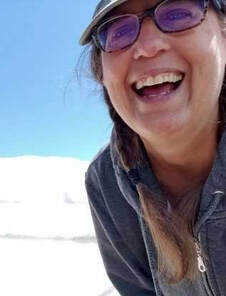 Barb Boyer Buck is the managing editor of HIKE ROCKY magazine. She is a professional journalist, photographer, editor and playwright. In 2014 and 2015, she wrote and directed two original plays about Estes Park and Rocky Mountain National Park, to honor the Park’s 100th anniversary. Barb lives in Estes Park with her cat, Percy This piece of independent and local journalism was brought to you by Snowy Peaks Winery and XplorerMaps
0 Comments
Leave a Reply. |
Categories
All
|
© Copyright 2025 Barefoot Publications, All Rights Reserved


